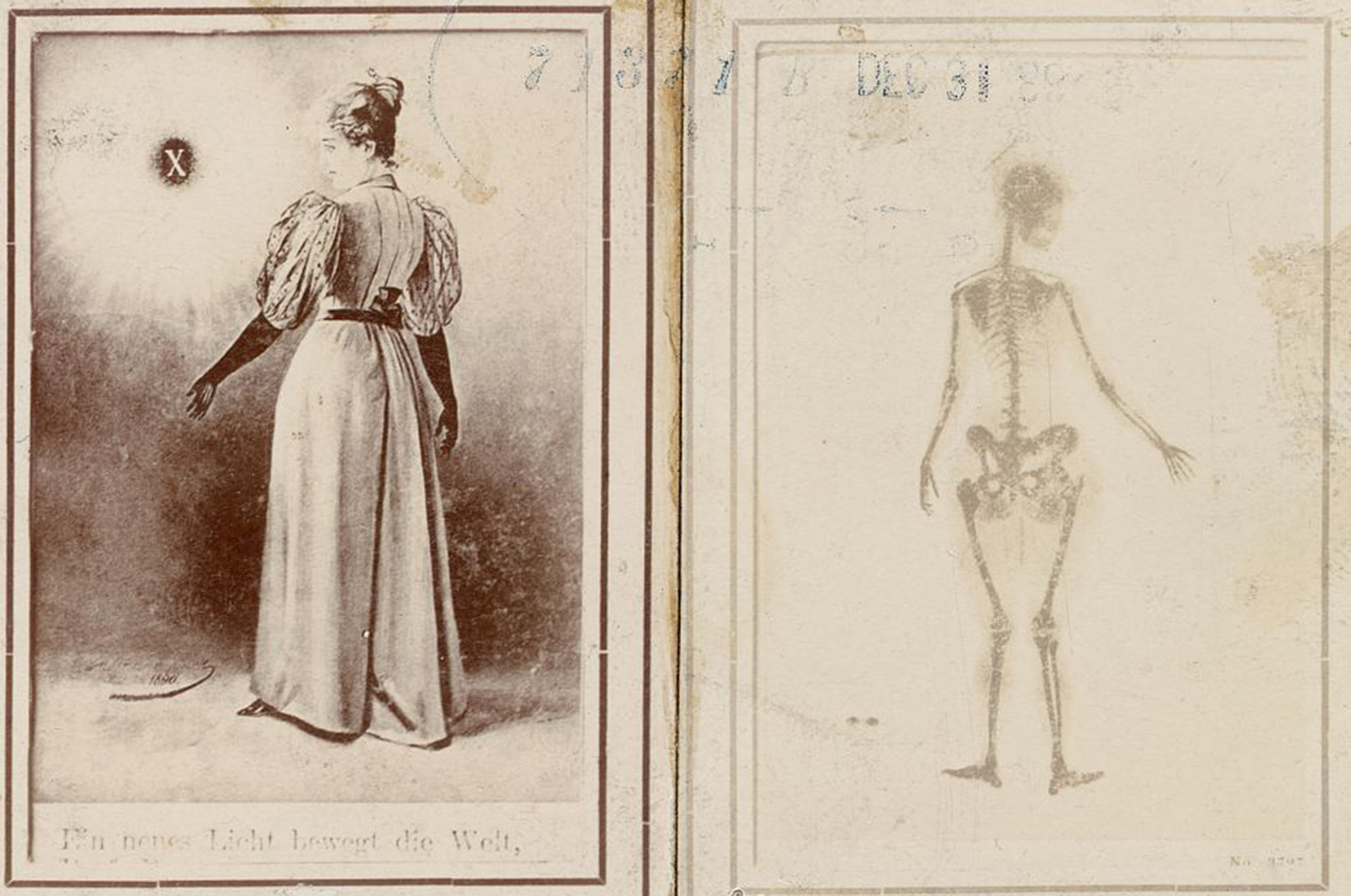
Photograph shows two views of a woman: one, a lithograph, shows her clothed, basking in the glow of the X-rays, the other shows an X-ray photograph of her skeleton in a similar pose, 1896. Library of Congress, Prints and Photographs Division.
• Meet the seven-thousand-year-old Swedish “Seated Woman.” (National Geographic)
• “History, especially American history as it relates to the Native population, is neither unifying nor comfortable. Yet, speaking from personal experience, the North Carolina public education curriculum, particularly as implemented in rural communities, has long been focused on unity, if your idea of unity is peddling Lost Cause ideology, questioning Darwinian principles, and lauding United States military action.” (The New Republic)
• “Radar Scans Reveal Ancient Human Footprint Embedded in Mammoth Track.” (Gizmodo)
• On the false promise of civility. (The Atlantic)
• On Virginia Woolf’s early literary criticism. (Times Literary Supplement)
• A literary nonprofit bought Elizabeth Bishop’s Key West home. (New York Times)
• A historical marker in Wilmington, North Carolina, no longer calls a a white-supremacist-led coup in 1898 a race riot: “You don’t call it that anymore because the African Americans weren’t rioting. They were being massacred.” (The Root)
• How the story of the dinosaurs’ demise was uncovered. (Nautilus)
• The X-ray-obsessed nineteenth century. (JSTOR Daily)
• On the ties to slavery in the past of Boston’s Old North Church. (Episcopal News Service)
• This week in obituaries: a Buddhist monk who played a role in the Vietnam War, a BBC producer, the architect who helped make the Expo 67 geodesic dome a reality, a leader of the anti-apartheid movement in the U.S., a photographer of the Beatles, an editor who dealt with a giant journalistic fiasco, an eternal runner-up at the Tour de France, and a scholar of white privilege.